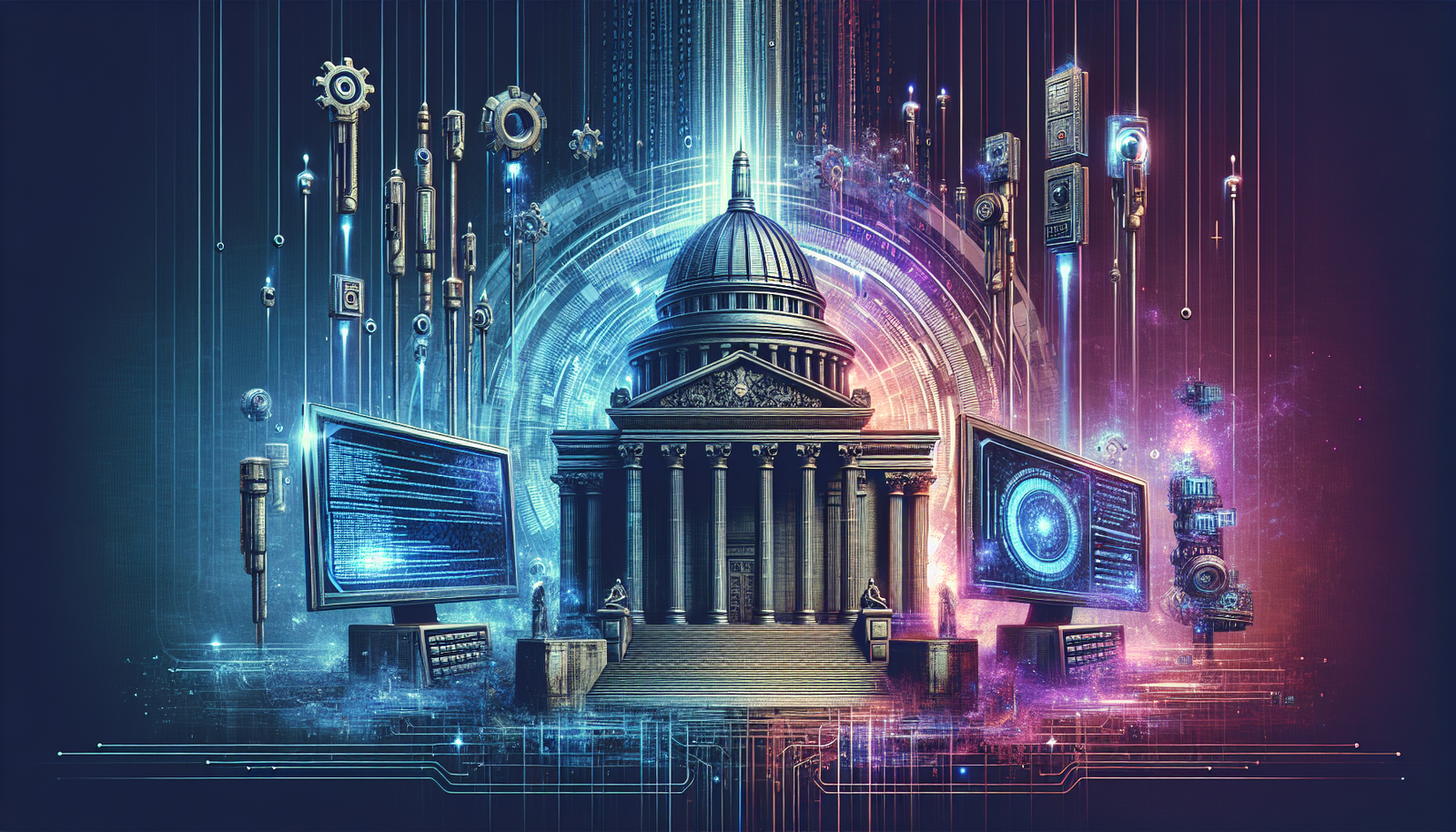The rapid rise of artificial intelligence (AI) is revolutionizing public administrations, but outdated computer systems hinder this evolution. Major issues are emerging, particularly the need to optimize the management of public data to foster innovation. AI can transform service delivery, but outdated tools slow down this progress. Administrations must reinvent themselves to take advantage of AI’s potential while overcoming current technological challenges. An unimpeded future requires modern infrastructures that are suitable. Aligning AI with governance is crucial to ensure effective and responsible public action.
The challenges of outdated systems
The implementation of artificial intelligence (AI) by the government faces numerous obstacles due to the existence of obsolete computer systems. A recent report reveals that local authorities are struggling to integrate AI solutions into their practices due to inadequate technological infrastructure. These outdated technologies hinder resource optimization and the efficiency of public services.
The necessity of technological renewal
Many government agencies maintain legacy systems that are incapable of supporting modern artificial intelligence applications. While 36% of the local authorities surveyed have tested AI systems, a significant portion of them still faces challenges with obsolete software. The lack of infrastructure upgrades considerably reduces the potential for innovation and performance in public policies.
Impacts on public action
The limitations of outdated systems manifest in several areas of public action. The attributes of artificial intelligence could enhance the allocation of social aid or the targeting of fraud. However, when these systems cannot communicate effectively with AI applications, the results often prove disappointing. Consequently, the acquisition of new tools is hindered by a lack of interoperability that has become detrimental.
The role of the regulatory agency
In light of these challenges, the need to transform regulations is becoming urgent. The study recommends a thorough restructuring of the National Commission on Informatics and Liberty (CNIL), making it responsible for regulating AI systems, especially those in the public sector. This evolution could allow for harmonization of practices and more rigorous management of citizens’ rights.
{{potential}} and risks of AI
Although artificial intelligence represents a lever for competitiveness for France, its deployment in public spheres must be done cautiously. The juxtaposition of rapid innovation and the protection of fundamental rights must be carefully kept in mind. Public administrations must prepare to manage both the opportunity to improve service quality and the risk of excess that could result from rushing into the adoption of these technologies.
Concrete use cases
Examples of AI initiatives in the public sector are emerging, while remaining limited by outdated systems. Administrations have begun to apply AI algorithms to monitor the population or handle cases of fraud, but these projects face significant operational constraints. Feedback from these applications reveals the potential benefits against institutional resistance.
Paths for collaboration
Renewing computer systems will become a priority for governments wishing to maximize the impact of artificial intelligence. Public-private partnerships can offer innovative solutions to replace outdated infrastructures. This requires a substantial mobilization of human and financial resources to facilitate a transition to more advanced technologies.
The stakes of cybersecurity
Any process of digital transformation must also consider the increasing stakes of cybersecurity. The establishment of AI systems requires heightened attention to the risks associated with the handling of sensitive data, particularly regarding the protection of personal information. Inadequate security measures could expose administrations to breaches and malicious attacks, thereby jeopardizing citizens’ trust.
Conclusion on the implementation of AI
In a context of rapid evolution, local authorities must urgently modernize their systems. The path to integrating AI can only be optimized through interlinked operations of their infrastructures. The transition will require strong political will as well as a long-term commitment to innovation and the protection of citizens’ rights.
Frequently Asked Questions about the Implementation of AI by the Government and Outdated Computer Systems
What is the importance of modernizing computer systems for the implementation of AI in public administrations?
Modernizing computer systems is crucial for enabling effective integration of AI, as outdated systems can lead to limitations in data processing, security, and compatibility with new technologies.
What are the main challenges faced by the government in integrating AI due to outdated computer systems?
The challenges include slow systems, lack of storage and processing capacity, as well as security issues that can compromise the reliability of implemented AI applications.
What negative impacts can result from using outdated computer systems in governmental AI projects?
Negative impacts can include poor decision-making due to inaccurate data, heightened cybersecurity risks, and a loss of trust from citizens in public services.
How can authorities identify obsolete systems that compromise AI?
Authorities can conduct regular technological audits, assess the performance of current systems, and implement upgrade criteria for the software and hardware used.
What investments are necessary to replace obsolete systems with modern AI technologies?
Investments include acquiring new IT infrastructure, developing suitable software solutions, and training personnel on new AI technologies.
Are there examples of governmental failures due to obsolete systems during the implementation of AI?
Yes, several projects have been delayed or failed due to difficulties in integrating AI with systems that cannot handle large data volumes or complex algorithms.
How do data protection regulations influence the implementation of AI by the government?
Regulations impose constraints on how data is collected, stored, and used, which can slow down AI integration if outdated systems are not compatible with these requirements.
What solutions can be implemented to optimize the use of AI despite outdated computer systems?
Solutions include adopting hybrid technologies, implementing gateways to integrate new systems with old ones, and prioritizing AI projects based on existing technological capabilities.






